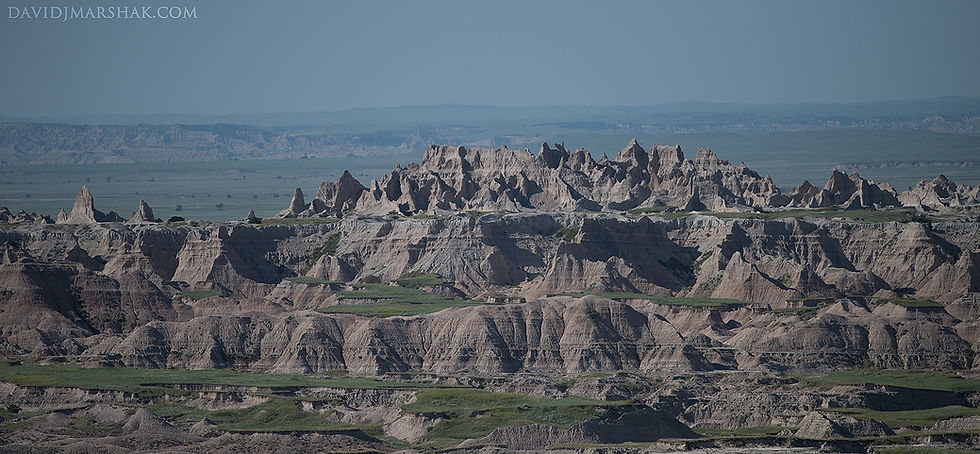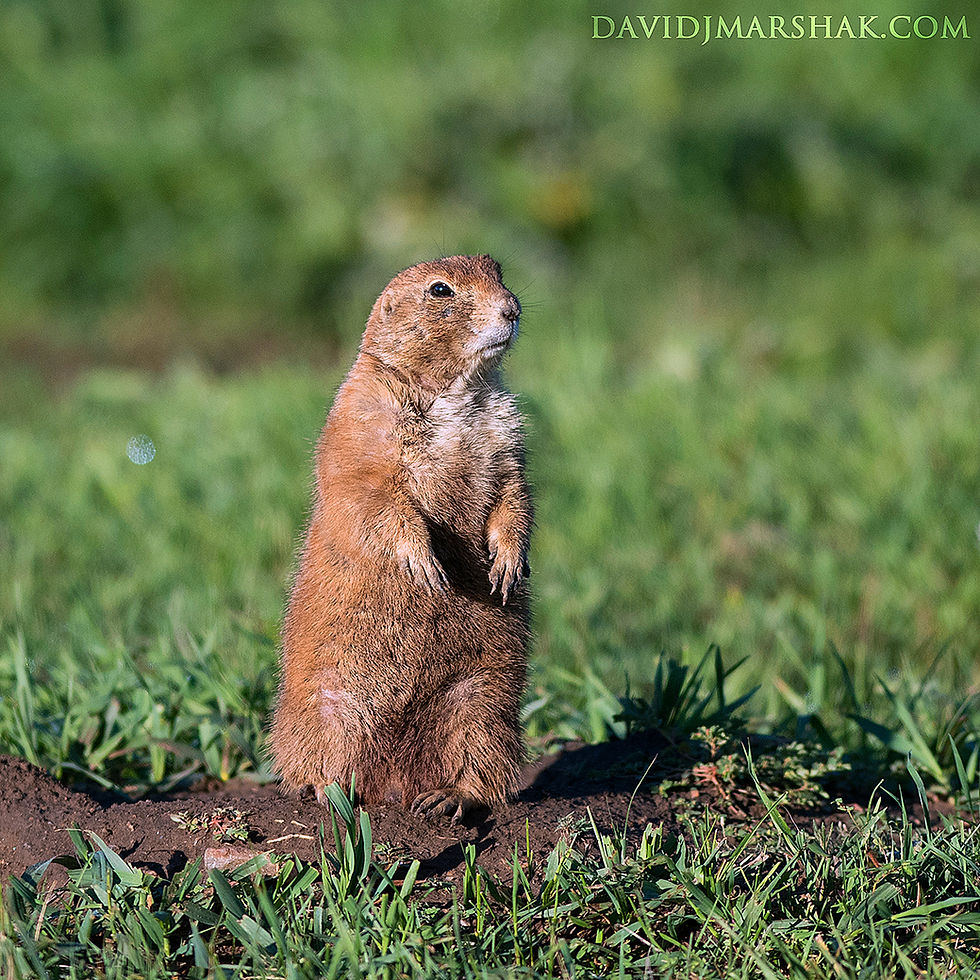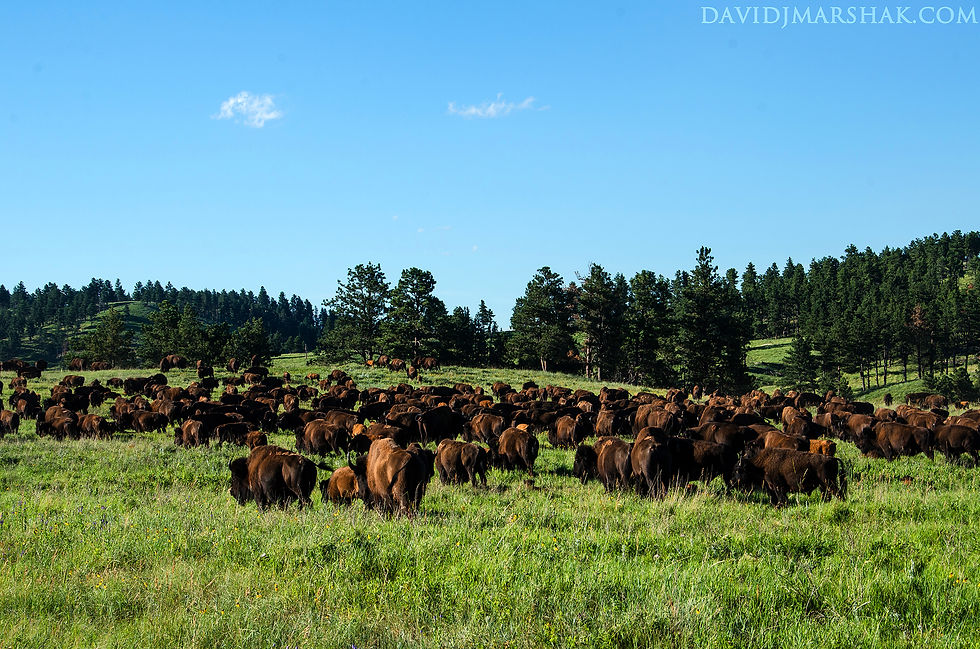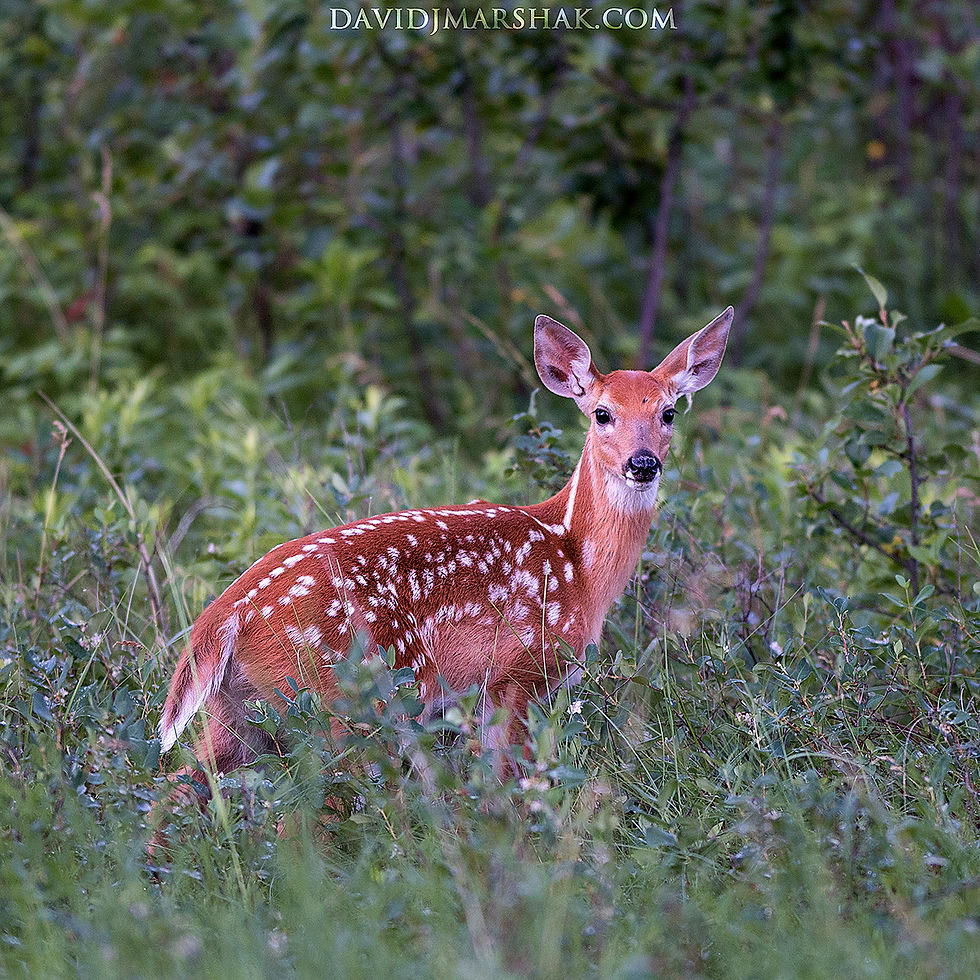Trip Report: The American Serengeti
- David J. Marshak
- Feb 9, 2017
- 6 min read
In the summer of 2015 I spent two weeks in South Dakota exploring the Great Northern Plains of America and the Black Hills National Forest. This was an area that had always captivated me, not only as a potential wildlife location, but also because of its profound history and religious significance to the Oglala Lakota and native peoples of the region. On my doorstep, a straight and simple nine hour drive from my home in Minneapolis, it seemed inexcusable that I had not pointed my cameras in this direction. I set off with a fairly direct route that would take me by road through Southwest Minnesota and the Prairies that world renowned photographer Jim Brandenburg called home. From there, a very long, very straight, and very uninteresting drive across the wide open landscape of South Dakota to the Badlands National Park. A week in the Badlands, and then on to Custer State Park and the Black Hills National Forest. This was to be an inexpensive adventure that would introduce me to an area at the heart of my own National heritage.

Badlands National Park - For long stretches, driving through the Dakotas is probably not unlike driving on the surface of the moon. It's open. It's wide open. The majority of the nine hour drive from Minneapolis to the Western edge of South Dakota is spent staring ahead at an impossibly big sky. I know the idea sounds absurd, a "big sky," but it is hard to put into words the sheer vastness of these grasslands. Much of it has been converted to farmland which does nothing to add character to the land, but also does little to diminish the spectacular scale of it all.

Driving through South Dakota is the closest thing I have ever seen in America to the incredible vastness of the Masai Mara National Reserve (Kenya) and Serengeti National Park (Tanzania). Out of this incredible emptiness emerges the Badlands. This area is so named because throughout the 19th century the jagged rocks and hostile landscape provided the perfect place for outlaws to avoid the long arm of the law. A lot of shady people having done shady dealings found refuge in this place, and it's easy to understand why it was the perfect place. As you enter the Badlands the flat open prairie vanishes and suddenly you find yourself in an alien environment. The rock formations jut out in violent and aggressive formations, creating a labyrinth of intimidating and hostile landscape.

Even the climate itself fits the name, with searing heat during the day and bitter cold moving in by night, everything about the place is hostile and beautiful. If I were a landscape photographer then I would have spent more time in this amazing and unbelievable place, but I was chasing wildlife and this is where the Badlands has its limitations. There are good wildlife numbers, and pronghorn, bighorn sheep, and bison range throughout the park. There are also plenty of coyotes and rattlesnakes, who have adapted well to this strange ecosystem.

I, of course, set myself on a mission to obtain the near impossible. The North American Black Footed Ferret is the most endangered mammal on the entire continent. A small population has been reintroduced to Badlands National Park and I spent most of my time there camped out in Prairie Dog towns (their primary prey species) hoping to photograph an animal that is virtually never seen. Of course I struck out, but I got to spend a lot of time listening to the "dogs" whistle and call to each other. I spent so much time laying in the tall grass I started to imagine the conversations they were having with one another. The second species on my Badlands wish list was the burrowing owl, but alas, I failed to find them as well. Sweating through my days and shivering through my nights, I left the Badlands feeling beaten down and slightly demoralized. I would wager this is not unlike how many lawmen felt after suffering this landscape in despair, looking for those with a bounty on their heads.

Custer State Park & The Black Hills National Forest - Let's just get something out of the way right from the start, George Armstrong Custer is not an American hero. I would probably characterize him, if pressed to do so, as a murdering bastard and a key cog in the machinery that perpetuated a devastating and horrific genocide on the native peoples of North America. I am not a fan. Heading West from the

Badlands I set my sights directly on a South Dakota State Park named for this dubious character, and being a High School History teacher thoughts of Custer and his 7th cavalry danced through my head. A massive thunderstorm, visible for miles in the distance on the open plain, dominated the horizon. Driving through scenery like this its hard not to be romantic about it, but I thought about the storm that hit the plains people when white men arrived. It started with a trickle, and before they knew what was happening their whole world was crashing down around them. I made camp in the park in a driving rain and hail. After suffering in the Badlands with little success, it was right around this point that I was having my doubts about this expedition. When I awoke the next morning the storm was gone. The morning was calm, and the world around me was truly beautiful. This place was breathtaking, and the amount of wildlife visible just from the main loop in the park was overwhelming. In just the first few hours I saw mule deer, white tails, a large herd of elk, and Custers famous bison herd. Once the single largest herd of mammals on the entire planet, millions of bison thundered across the American Midwest.

Entire cultures, like the Lakota, lived and thrived on the movement of these mighty animals. Larger than the African Cape Buffalo (though admittedly with a little less attitude), these giants were nearly wiped out by white hunters who killed them only for their tongues and their pelts, leaving the rest to rot. Now the bison has made a comeback, though there are still just a few free roaming herds in the entire country. The herd at Yellowstone and the one at Custer being the most notable. Making my experience authentic, I got myself stuck in a "bison jam" on the main wildlife loop, with hundreds of them basking in the summer sun in the middle of the road.

I had several good days in the park just exploring and waiting to see what I might see. Photographically the early mornings were best, not only for light, but also for the lack of other people and general relaxed mood of the animals. I tracked a herd of elk into the neighboring Wind Cave National Park, where the rolling green hills gave way to the Black Hills National Forest. The last wild black footed ferret to be photographed was five years ago in Wind Cave, but I decided to go for a different, though equally ambitious quarry with my few remaining days. Driving up to the magnificent Sylvan Lake (where the movie National Treasure was filmed),

I decided to try my hand at tracking an animal that was known to reside in this forest, but almost never seen... the mountain lion. I did find signs almost immediately. There were tracks, and even scat, and I spent two full days working an aggressive grid around where I had picked up those signs. Just as I was beginning to imagine that I might have imagined those signs, I found myself looking up about 20ft into a tree, at the half eaten carcass of a large bighorn sheep. Only one animal could have been responsible, and I was overcome with the realization that the cat I had been seeking, had almost certainly been watching me the entire time. It was almost certainly watching me in that exact moment. Suddenly a bit unsettled, I hiked back down to the trail and went back to the lake to photograph the yellow bellied marmots that had taken up residence on the rocks. Sometimes we're chasing cats, but life gives us marmots instead. My advice? Enjoy every moment with those marmots.

If you are looking to get to know wild North America, then the American Serengeti should be on your bucket list. Though I didn't do this myself, it could easily be planned as part of a route to or from Yellowstone or Grand Teton National Park. If you are seeking wildlife photography then Custer State Park and its wildlife loop road are an absolute must. Thus far it is the closest thing I have experienced to an African safari game drive here in the U.S., at least one that has truly wild animals on it. I intend to return sooner rather than later, and who knows, maybe I will stop in the Badlands and look for ferrets again.
~DM

Comments